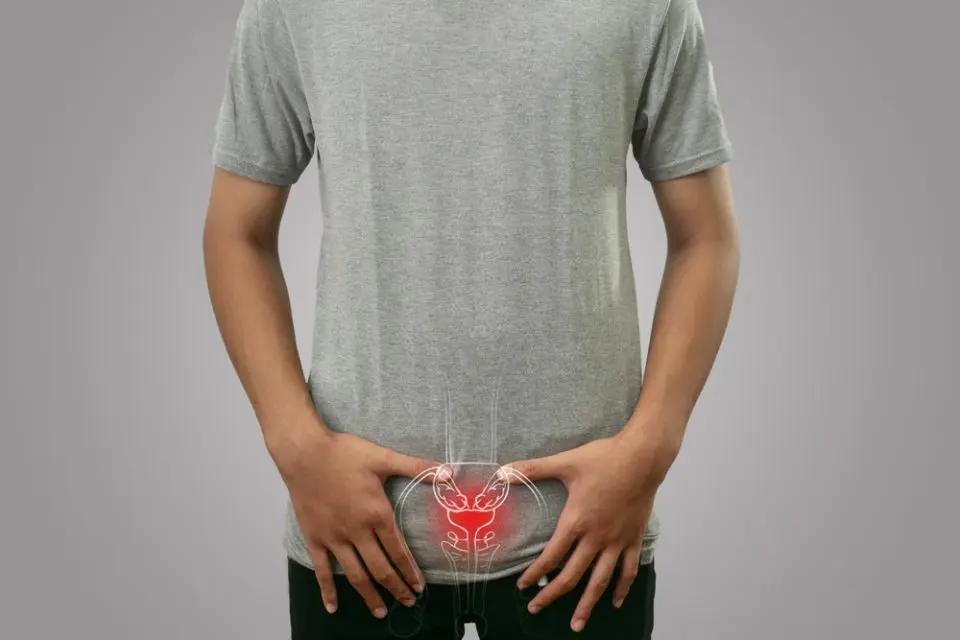Summer’s arrival brings increased temperatures that trigger the body’s most sophisticated cooling system through perspiration. Rather than viewing sweat as an embarrassing inconvenience, understanding its profound health benefits can transform how you experience hot weather and physical activity during the warmest months of the year.
The human body produces sweat through an intricate network of glands that respond to temperature changes, physical exertion, and emotional states. This complex biological process serves multiple functions beyond simple temperature regulation, creating cascading health benefits that extend throughout various body systems.
Modern society often portrays sweating negatively, leading many people to suppress this natural process through excessive air conditioning, antiperspirants, and sedentary lifestyles. This cultural aversion to perspiration prevents people from experiencing the numerous health advantages that regular sweating provides.
Embracing sweat as a beneficial bodily function rather than fighting against it can improve physical health, mental wellbeing, and overall summer enjoyment. Understanding how perspiration works and learning to work with your body’s natural cooling mechanisms creates opportunities for enhanced health throughout the hottest season.
Sweat supercharges your cardiovascular system
The first major health benefit of regular sweating involves cardiovascular system enhancement through improved circulation and heart muscle strengthening. When your body produces sweat, your heart rate increases to pump blood more efficiently to the skin surface where cooling occurs.
This cardiovascular workout strengthens heart muscle while improving circulation throughout the entire body. Regular sweating sessions, whether through exercise or heat exposure, create similar benefits to moderate cardiovascular exercise by challenging the heart to work more efficiently.
Blood vessel dilation during sweating episodes improves overall circulation patterns that can persist beyond the immediate sweating period. This enhanced circulation delivers oxygen and nutrients more effectively to organs and tissues while supporting improved waste removal from cellular processes.
The cardiovascular benefits of sweating extend to blood pressure regulation as the body adapts to regular heat stress. People who sweat regularly often experience improved blood pressure readings as their cardiovascular system becomes more efficient at managing circulation demands.
Heat adaptation through regular sweating can reduce cardiovascular strain during future heat exposure or physical activity. This physiological adaptation makes summer activities more comfortable while providing protection against heat-related health issues.
Natural detoxification occurs through perspiration
The second significant benefit involves the body’s ability to eliminate various toxins and metabolic waste products through sweat excretion. While the kidneys and liver handle primary detoxification duties, perspiration provides an additional elimination pathway for certain substances.
Sweat contains small concentrations of heavy metals, chemicals, and metabolic byproducts that the body needs to eliminate. Regular sweating sessions can help reduce the total toxic load by providing this supplementary excretion route alongside primary detoxification organs.
The detoxification process through sweating becomes particularly relevant in modern environments where people encounter various environmental toxins through air pollution, processed foods, and household chemicals. Perspiration offers one method for reducing accumulated toxin levels in body tissues.
Research indicates that certain toxic substances appear in higher concentrations in sweat compared to blood or urine, suggesting that perspiration may be particularly effective for eliminating specific types of contaminants from the body.
The cumulative effect of regular detoxification through sweating may contribute to improved energy levels, clearer thinking, and better overall health as the body maintains lower toxic burden levels through consistent elimination processes.
Skin health improves dramatically through regular sweating
The third major benefit focuses on skin health enhancement as perspiration delivers multiple protective and nourishing compounds directly to the skin surface. Sweat contains natural antimicrobial peptides that help protect against harmful bacteria and other microorganisms.
The flushing action of sweat helps clear pores of accumulated debris, dead skin cells, and excess oils that can contribute to acne and other skin problems. This natural cleansing process works from the inside out to maintain clearer, healthier skin appearance.
Increased circulation during sweating episodes delivers enhanced oxygen and nutrient supplies to skin cells, supporting cellular repair processes and promoting that healthy glow associated with regular exercise and heat exposure.
The mineral content in sweat provides natural nourishment to skin tissues while the slightly acidic pH of perspiration helps maintain the skin’s protective acid mantle that guards against harmful microorganisms and environmental damage.
Regular sweating can improve skin texture and appearance over time as the consistent flushing and nourishing effects accumulate. Many people notice improved skin clarity and radiance when they maintain regular sweating habits through exercise or heat exposure.
Mental health benefits emerge from heat-induced perspiration
The fourth advantage involves significant mental health improvements that occur during and after sweating episodes. The physiological stress of heat exposure triggers the release of endorphins and other mood-enhancing neurochemicals that create feelings of wellbeing and relaxation.
Heat stress activates the body’s stress response systems in controlled, beneficial ways that can improve overall stress resilience. Regular exposure to mild heat stress through sweating helps train the body’s stress response mechanisms to function more effectively.
The meditative aspects of activities that induce sweating, such as sauna sessions or hot yoga, provide mental relaxation benefits that extend beyond the immediate activity period. These practices often incorporate mindfulness elements that enhance mental clarity and emotional balance.
Temperature regulation through sweating may influence neurotransmitter production and balance, potentially contributing to improved mood stability and reduced anxiety levels. The cooling sensation after sweating episodes often creates feelings of refreshment and mental clarity.
Social aspects of group activities that involve sweating, such as group fitness classes or sauna experiences, provide community connection benefits that support mental health through shared experiences and mutual encouragement.
Immune system function strengthens through heat adaptation
The fifth benefit involves immune system enhancement that occurs through regular heat exposure and sweating. Mild heat stress triggers protective responses that can strengthen overall immune function and disease resistance.
Heat shock proteins produced during sweating episodes help protect cells from various types of stress and damage while supporting cellular repair processes. These protective proteins may contribute to improved longevity and disease resistance over time.
The temporary elevation in body temperature during intense sweating sessions creates an artificial fever-like state that may help eliminate certain pathogens and support immune system activation. This controlled hyperthermia can provide some of the immune benefits associated with natural fever responses.
Regular heat adaptation through sweating may improve the body’s ability to respond effectively to actual infections or health challenges by maintaining more robust immune system function through consistent mild stress exposure.
The improved circulation and detoxification associated with regular sweating support immune system function by ensuring better nutrient delivery to immune organs while helping eliminate waste products that might otherwise interfere with immune responses.
Sleep quality improves with regular heat exposure
The sixth advantage focuses on sleep quality improvements that often accompany regular sweating habits. The temperature regulation challenges associated with sweating can help calibrate the body’s natural circadian rhythms and temperature cycles.
Post-exercise cooling after sweating sessions triggers natural drowsiness as core body temperature drops, often leading to deeper, more restorative sleep. This natural temperature cycle mimics the body’s preparation for sleep and can improve overall sleep quality.
Heat adaptation through regular sweating may improve the body’s ability to regulate temperature during sleep, reducing night sweats and temperature-related sleep disruptions that can affect sleep quality and duration.
The stress reduction and endorphin release associated with sweating activities often contribute to improved mental relaxation that supports better sleep onset and sleep maintenance throughout the night.
Regular physical activities that induce sweating provide the exercise benefits associated with improved sleep quality while the heat exposure component adds additional sleep-promoting effects through temperature regulation mechanisms.
Weight management becomes easier with increased perspiration
The seventh benefit involves weight management support through the various metabolic and physiological effects of regular sweating. While sweat itself represents primarily water loss, the activities and processes that generate perspiration often support healthy weight maintenance.
The cardiovascular challenges associated with sweating increase overall metabolic rate during and after sweating episodes, contributing to higher daily calorie expenditure that supports weight management goals when combined with appropriate nutrition.
Heat exposure during sweating sessions may influence metabolism and fat utilization patterns, potentially supporting more efficient energy use and fat burning during both activity and recovery periods.
The appetite regulation effects of heat exposure and sweating activities often help people maintain better portion control and food choices, as intense heat can temporarily reduce appetite while promoting hydration focus over food consumption.
Regular sweating habits often correlate with more active lifestyles and better overall health choices that naturally support healthy weight maintenance through comprehensive lifestyle improvements rather than isolated interventions.
Maximizing summer sweat benefits safely
Successful sweat embracing requires strategic approaches that maximize benefits while preventing dehydration, overheating, or other heat-related problems. Proper hydration becomes the foundation of safe sweating practices during summer months.
Pre-hydration before anticipated sweating activities helps ensure adequate fluid reserves while ongoing hydration during sweating sessions maintains safe electrolyte balance and prevents dehydration complications that can interfere with sweat benefits.
Gradual heat adaptation allows the body to adjust to increased sweating demands without overwhelming physiological systems. Starting with shorter, less intense heat exposures and gradually increasing duration and intensity helps build heat tolerance safely.
Appropriate clothing choices can enhance sweating benefits while maintaining comfort and safety. Lightweight, breathable fabrics that allow sweat evaporation work better than heavy or synthetic materials that trap heat and moisture against the skin.
Recovery protocols after intense sweating sessions should include gradual cooling, continued hydration, and electrolyte replacement to support the body’s return to normal temperature while maintaining the benefits gained during the sweating period.
Creating sustainable summer sweating routines
Long-term success with sweat embracing requires developing sustainable routines that can be maintained throughout summer months and adapted to individual preferences and circumstances. Consistency provides better benefits than sporadic intense sessions.
Morning sweating routines can provide energy and mood benefits that last throughout the day while avoiding the hottest afternoon temperatures that might make sweating activities uncomfortable or potentially dangerous.
Evening sweating activities can support stress relief and sleep preparation when timed appropriately to allow adequate cooling before bedtime. The key involves finding timing that provides benefits without interfering with sleep quality.
Indoor alternatives such as hot yoga, sauna sessions, or heated fitness classes provide controlled environments for beneficial sweating when outdoor conditions are unsuitable or unavailable for safe heat exposure activities.
Seasonal adaptation helps maintain sweating benefits throughout the year by transitioning from outdoor summer activities to indoor alternatives during cooler months, ensuring consistent heat adaptation and associated health benefits.
Embracing sweat as a beneficial bodily function rather than an embarrassing problem transforms summer experiences while providing significant health advantages across multiple body systems. The key lies in understanding how perspiration supports health while implementing safe practices that maximize benefits without creating risks.
Regular sweating through appropriate activities and heat exposure can improve cardiovascular health, support detoxification, enhance skin condition, boost mental wellbeing, strengthen immune function, improve sleep quality, and assist with weight management goals.
Summer provides natural opportunities to experience these sweating benefits through outdoor activities, exercise, and heat exposure that work with the body’s natural cooling systems rather than constantly fighting against them through artificial cooling and sweat suppression.













